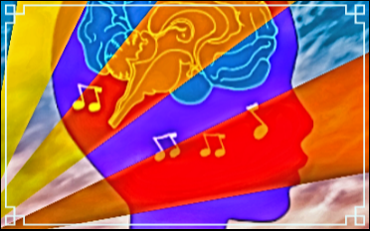Music Therapy Applications
Any diagnosis that results in motor, speech, or cognition challenges can be helped by using music therapy protocols. Here is a short list of common diagnoses that typically respond very well to music therapy, but this list is certainly not complete.
Trevor was diagnosed as being on the autism spectrum. Prior to 2013, he would have been diagnosed with Asperger's Syndrome, a high functioning form of autism. There is much more detailed information regarding autism in other areas in this website. The conidition is becoming much more prevalent with each passing year. In 2020, the Centers for Disease Control (CDC) reported that approximately 1 in 36 children in the U.S. is diagnosed with an
autism spectrum disorder (ASD), according to 2020 data. Boys are 3.8 times more likely to be diagnosed with autism than girls.
This neurological disorder can be genetic but usually results from a deprivation of oxygen in utero caused by an infection or trauma. It is primarily a movement disorder that can result in a loss of balance, muscle control, and other motor issues. Children with cerebral palsy can benefit from both the fine-muscle toning of playing an instrument, such as a keyboard instrument, and large-muscle toning, for example, with drums or working with gait issues using rhythm-based walking.
1. Prevention – Music enrichment in the form of playing an instrument can be very powerful therapeutically to strengthen the cognition processes. Studies have shown that older adults learning to play a keyboard instrument for the first time in an intensive 3-week period (3 hours a day for 6 days a week) actually improved their cognition processes, as shown by results from standardized cognition testing programs. The process of learning to read music and using both hands to play stimulates many cognition processes in the brain, thus, encouraging neural growth and preventing the cognitive decline that comes with dementia.
2. Therapeutic results – Research shows that musical memories are stored in a different area of the brain from the physical memory of the experience associated with them. When music is utilized therapeutically with someone who is already in the grip of dementia, it can provide a temporary response. Singing or recognizing a song associated with a memory may bring the person into the moment, enabling quality time with family or friends.
This congenital condition typically results in poor muscle tone, delayed speech, short attention span, and slower learning capabilities. Music therapy as well as music enrichment in the form of dance or playing an instrument can be very beneficial, and this population seems to naturally enjoy music. As these children age, they are more prone to early onset of dementia, and music therapy can assist here also.
Attention Deficit Hyperactivity Disorder (ADHD)
Typically ADHD develops in children between the ages of 3 and 6. One of the most common symptoms is an issue with attention focus, which can be helped by utilizing music to assist selective attention. Music can also help with hyperactivity, as rhythmic assisted gait training can be introduced at a quick rhythm to match the hyperactive state, then gradually slowed, having the physiological response in the body slow with it.
Bijan’s Grandfather Hakeem has PD, which manifests in the trembling of his hands, a condition called dystonia that makes a person prone to involuntary movements or muscle spasms. Grandfather Hakeem also has periodic problems with attention focus, when his gaze will temporarily wander up to the ceiling. In later phases of the disorder, there can be loss of speech. Unfortunately, PD is one of the diseases in which brain plasticity cannot help regrow the damaged area. The area of the brain affected by PD, called the basal ganglia, has been weakened by a lack of the chemical neurotransmitter dopamine. This area cannot regenerate new growth, but daily music therapy routines can improve quality of life. In the book, Grandfather Hakeem responds very well to Trevor’s Skally walk to help his gait. Persons with PD tend to have a “freeze of gait” problem as the disease progresses, and that issue can be coupled with fear of falling. The external beat of the music seems to assist other networks in the brain to compensate for the loss of the “stop – go” mechanism of voluntary motor movements.
Cognition issues can also arise, such as attention focus and executive functioning loss. Music therapy can assist with these issues as well.
Depending on where a stroke occurs in the brain, the patient may be left with a combination of motor, speech, and cognition issues. In aphasia, a common speech disorder following stroke, a patient is unable to piece the right words together with a thought; as a result speech can be garbled. However, since music reaches both hemispheres of the brain, it is possible to practice speaking by repetitive singing, and eventually the neural pathways can regrow to regain speech ability. Stroke can also affect gait or other kinetic muscle movements, and motor techniques can help to regain coordination and strength.
Traumatic Brain Injury (TBI)
All the neurological challenges discussed above have arisen out of medical conditions, but trauma can also affect the brain and result in similar motor, speech, or cognition issues. Depending on the location of the injury, TBI can manifest in issues similar to those already described.


